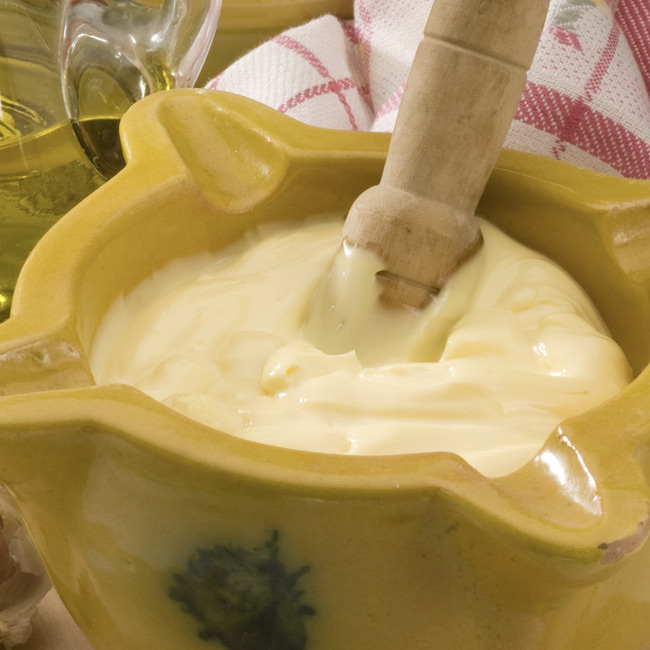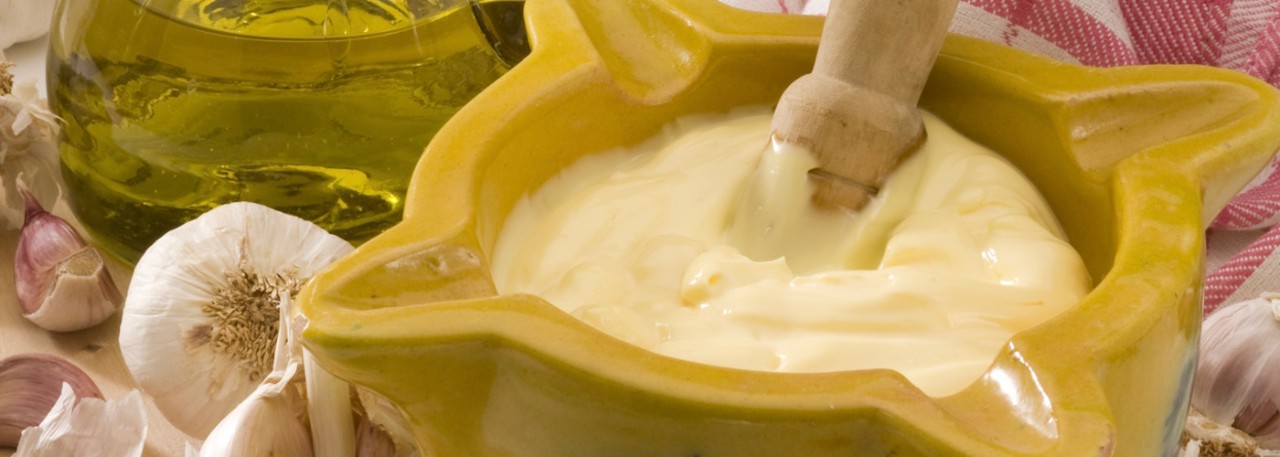.png.transform/rendition-xs/image_image%20(1).png)
Culinary Alchemy: Catalan Aioli Sauce
Imagine you are at a barbecue with some friends, the meat ‘a la brasa’ (grilled) is ready to eat, and you have a fresh batch of aioli sauce on the side. Yes, Aioli, the super flavorful, tasty, and slightly addictive sauce with origins dating back to the Romans.
The original aioli recipe consists of fresh garlic paste and extra virgin olive oil, blended to form a cream. I remember my grandmother Montserrat preparing it each Sunday for the family meal. I used to watch her with care and attentiveness as she slowly mashed the garlic and then added the oil. It was a ritual: the family gathered in the house in Llafranc, a small and idyllic Mediterranean town located in la Costa Brava, Catalonia, and grandma orchestrated everything to make sure the Paella was cooking outside on the fire at the same time. I remember her mashing the garlic with consistency and strength, using the very same family mortars she kept next to a large wooden spoon. Aioli is a special sauce used in Mediterranean gastronomy, but not without its share of controversy.
The traditional preparation technique required manual skill to produce the desired texture profile - very similar to mayonnaise. Modern cooking utensils and adding egg yolk has given us another easier way to bind aioli. However, if you want to go the traditional route you need to make sure the aioli doesn't curdle. An eggless recipe is harder to emulsify, meaning it’s more challenging to achieve the rich and buttery fusion of extra virgin olive oil and garlic. It may take a lot of work, but the result is delicious!

The name alioli comes from the Catalan words for its two main ingredients: all (garlic), i (and), and oli (oil). Garlic is known to be incredibly healthy as it contains many nutritional benefits. One of its components, a sulfuric substance called allicin, is the main reason why it is so good for the body (however not so great after a romantic date). For some people, garlic causes heartburn or acid reflux. However, when garlic is heated, the presence of allicin is reduced, so you can enjoy the meal without having to worry afterwards. Drinking water or chewing mint gum can help with some of the side effects.Aioli is the perfect companion for dishes featuring meats, fish, or vegetables; and can also be spread on a loaf of bread. In Spanish gastronomy, it is often used as a complement in main course recipes and served alongside patatas bravas, croquetas de jamón, or fish soup.
Here is a Traditional Catalan aioli recipe from Food and Wine magazine.
Cooking is about enjoying the art of curating the food as an experience for yourself and others. So go ahead and if you want to try the modern egg based way of making the creamiest aioli click the link to see step by step Bon Appetit magazine recipe.
Author: Laura D'Ocon

